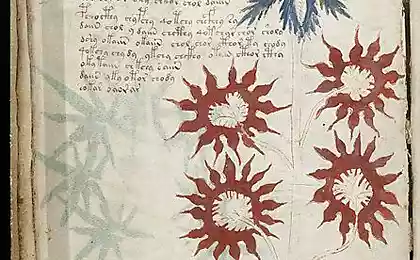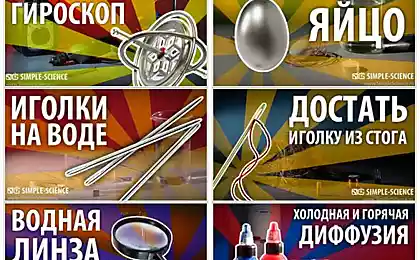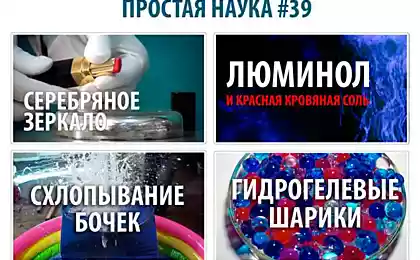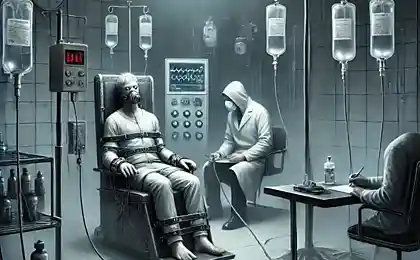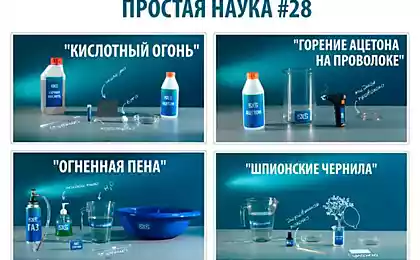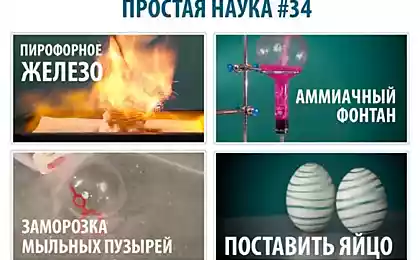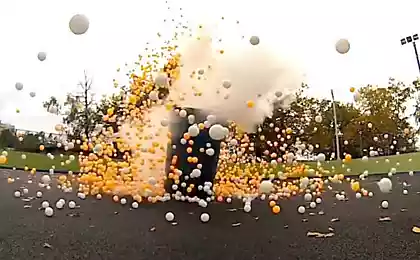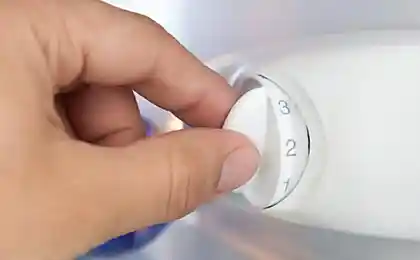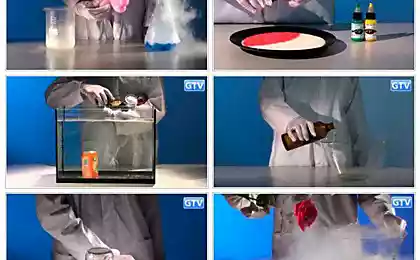1520
Simple Science - updated digest experiments # 27
It took half a year since the start of the channel simple science . Behind the back of more than 200 experiments. We decided to mark the occasion by releasing a small movie:
Now we present our experiences in an updated form. We tried to make them even more entertaining and informative. And not without pride we present to the audience four new video format:
61,259,303
Now we present our experiences in an updated form. We tried to make them even more entertaining and informative. And not without pride we present to the audience four new video format:
61,259,303
- a rewarding experience;
- a beautiful experience;
- useless experience; < experience that should not be repeated.
The fire from the batteries and gum h5>
The foil consists essentially of aluminum, steel, and tin. And so is an excellent conductor of electricity. A cross piece of foil on the battery terminals, we obtain a simple electrical circuit, which, thanks to our scissors, consists of three series-connected parts.
Through the foil passes current and heats it as a spiral light bulb or an electric stove, but unevenly, because the thinner the wire, the greater the resistance, the more energy is released. Thin (about 2 mm) piece of foil on the web more heat and the rest of the red-hot. Bonded to the foil paper from the heat ignited, and from it - and a piece of cotton wool, which in turn ignites the candle. Everything just.
To experience needed: a new AA battery or the like, packing plates gum, candy, candle.
The ocean in a bottle h5>
Vegetable oil is immiscible with water and is located above the water. Can be empirically pick solid (e.g., float), so that it will be on the boundary of these liquids.
If the bottle is half filled with colored water, and the rest of the eyeballs fill with oil, the air in the bottle will not. The viewer the impression that the bottle blue ocean. And if you shake the bottle, you get a real storm.
To experience need: a plastic bottle, water, paint or food coloring, vegetable oil, the float.
Knock at the bottom of the bottle h5>
Cavitation from Latin means "emptiness." Cavitation occurs as a result of a local reduction in fluid pressure, for example, by increasing its speed. At this point, the liquid chambers are formed, which are called cavitation bubbles.
At the moment of impact at the bottom of the bottle pressure drops sharply. Moving with the flow in a region of higher pressure, the cavitation bubbles collapse, while emitting a shock wave. The resulting shock wave causes the destruction of the glass.
For the experiment will need: a glass bottle, the water basin.
Fire balls h5>
The burning of gasoline - a complex physico-chemical process. However, in our experience it really easy! Is couples are burning petrol (gasoline has a low boiling point from 33 ° C to 205 ° C). Warmed up couples try (remember how steam escapes from the spout) and there burned. It turns out that the combustion takes place only at the top of the ball (as it anyway - the pair will fly up, flowing ball and burning). While not burn out most of the gasoline to keep the balls from the bottom is pretty easy and almost safe.
Important:
To experience needed: 100% cotton fabric, thread, gasoline, matches or a lighter.
In conclusion, I want once again to tell you about our project with the children's books on bumstartere h5>

August 8 Online Boomstarter started fundraiser to publish books for children simple science. Print 5,000 copies of the book required 380.000r. And all of this money was collected for 10 days. In many ways - through habraeffektu who worked after our first publication of the book.
Since we were already working on a second book, we proposed to continue the project on bumstartere. To date we have already supported 625 people (many thanks to you guys!) And collected 576.375p. More about the book can be found here . There's also opened pre-order the book.
If you have not supported our project and we are ready to do it right now - you can transfer money to page project. There's also details all fees that get sponsors. For the case will be useful to any amount from 50 rubles. before ... (no upper limit;)
Source: habrahabr.ru/company/gtv/blog/192350/

